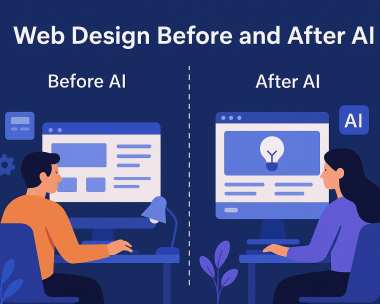Web Design Why Advanced Web Design & Development Matters for Your Business

Today, a website is more than a digital brochure—it’s your 24/7 sales engine.
With advanced design and development, you can:
✅ Boost Conversions – Data-driven UX, CRO, and behavioral analytics turn visitors into buyers.
✅ Future-Proof Your Brand – Custom builds, headless CMS, and scalability keep you ahead of competitors.
✅ Rank Higher on Google – Optimizing Core Web Vitals improves SEO, load speed, and user experience.
✅ Integrate Seamlessly – Connect your CRM, marketing automation, and e-commerce systems for omnichannel growth.
✅ Deliver Personalization – AI-driven recommendations, predictive search, and chatbots engage visitors in real time.
Your website isn’t just a cost—it’s an investment in growth.
Q1: How can advanced web design improve conversion rates?
Advanced web design uses data-driven UX/UI optimization, A/B testing, and behavioral analytics to refine layouts, CTAs, and user flows. By reducing friction points, personalizing experiences, and strategically guiding users toward actions, businesses can see 20–50% higher conversion rates without increasing ad spend.
Q2: Why should businesses invest in custom web development over templates?
Custom web development delivers unique functionality, stronger security, faster load speeds, and better scalability. Templates limit brand identity and can create SEO and performance issues, while custom builds give complete control over features, integrations, and user experience—making them future-proof and more profitable long term.
Q3: How does Core Web Vitals impact business website performance?
Core Web Vitals—Largest Contentful Paint (LCP), First Input Delay (FID), and Cumulative Layout Shift (CLS)—directly influence SEO rankings and user experience. A site optimized for these metrics loads faster, feels smoother, and ranks higher in Google, leading to increased organic traffic and conversions.
Q4: How can web design integrate with CRO (Conversion Rate Optimization)?
High-converting designs use strategic color psychology, trust signals, personalized recommendations, and heatmap-driven content placement. CRO-focused web design continually tests variations, adapting to user behavior in real time for measurable revenue growth without additional marketing costs.
Q5: Why is headless CMS becoming popular in web development?
A headless CMS separates content management from front-end design, enabling lightning-fast performance, multi-platform publishing, and better security. This allows businesses to deliver content seamlessly across websites, mobile apps, and IoT devices—while giving developers full flexibility in technology choice.
Q6: How does advanced web development support omnichannel marketing?
Modern web development ensures seamless integration with CRMs, marketing automation tools, analytics platforms, and e-commerce systems. This enables personalized, consistent experiences across web, mobile, email, and social channels—boosting customer retention and lifetime value.
Q7: How can AI be integrated into web design and development?
AI enhances websites through personalized content recommendations, predictive search, chatbots, dynamic pricing, and accessibility improvements. On the backend, AI assists with code optimization, automated testing, and security monitoring—reducing maintenance costs while improving user engagement.
Q8: What role does accessibility play in advanced web design?
Accessibility ensures compliance with WCAG standards, making sites usable for people with disabilities. Beyond legal compliance, it improves SEO, expands audience reach, and enhances user satisfaction. Advanced accessibility design includes keyboard navigation, screen reader support, and AI-driven content adjustments.

